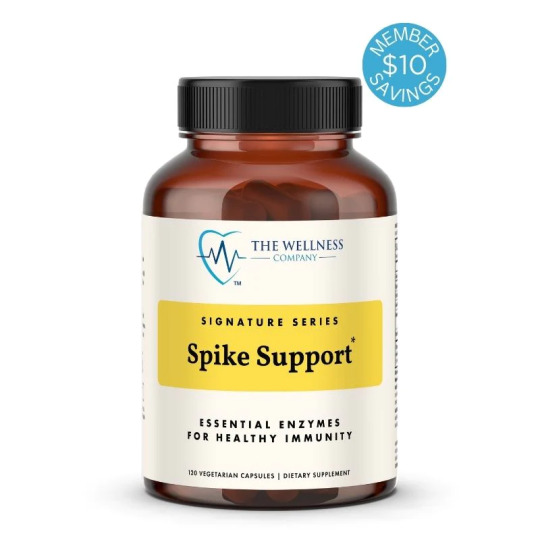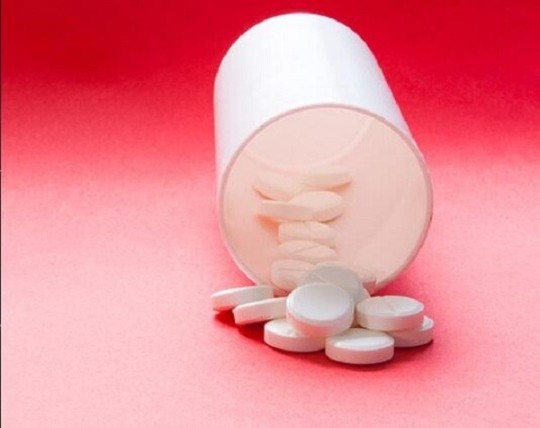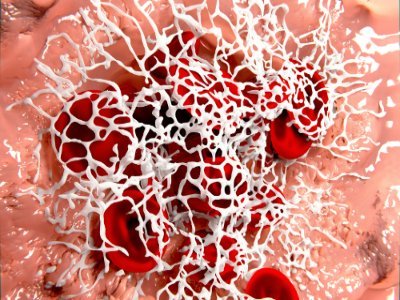#Fibrinolytic
Text
Remember the pre-COVID days?

Vaccinated or not, taking your health seriously has never been more important.
Our revolutionary Spike Support Formula is the only product that contains nattokinase and dandelion root – ingredients researched for their efficacy.
Buy daily Spike Support and give your body the natural immune support it needs to protect yourself and your family.
Top Recommendation by Health Consumer's Nattokinase.com!
From $64.99/ Members $54.99
#Nattonkinaise#Vaccine Recovery Formula#Spike Support#Natto#Blood Thinner#Fibrinolytic#may maintain a healthy immune system#Probiotic#Anti-Clotting#Long- haul#Long-Covid#nutrition#health
0 notes
Text

Obviously PCI is the tx for STEMI. My hospital has that capability so I don’t think I’ve ever seen a pt get fibrinolytic therapy for STEMI. But if you can’t get the pt to PCI within 90 minutes, you would give fibrinolysis with tenecteplase and send pt to a PCI capable facility.
2 notes
·
View notes
Text
Global Fibrinolytic Therapy Market Is Estimated To Witness High Growth Owing To Increasing Cardiovascular Diseases

The global Fibrinolytic Therapy Market is estimated to be valued At US$ 34.96 Billion In 2023 and is expected to exhibit a CAGR Of 3.7% over the forecast period 2023-2030, as highlighted in a new report published by Coherent Market Insights. Market Overview: Fibrinolytic therapy involves the use of drugs to dissolve blood clots in patients with cardiovascular diseases such as heart attacks, pulmonary embolism, and ischemic stroke. This therapy plays a crucial role in the management of these conditions by restoring blood flow and preventing further damage to vital organs. Fibrinolytic therapy offers advantages such as non-invasive treatment, quick response time, and cost-effectiveness. The increasing prevalence of cardiovascular diseases and the growing demand for minimally invasive treatment options are driving the growth of the fibrinolytic therapy market. Market Key Trends: One key trend in the Fibrinolytic Therapy Market is the development of novel fibrinolytic drugs with enhanced efficacy and safety profiles. Pharmaceutical companies are investing in research and development activities to enhance the therapeutic potential of fibrinolytic drugs. For example, Genentech, Inc. (Rochhas developed tissue plasminogen activators (tPA) that selectively target blood clots while minimizing the risk of bleeding complications. Such advancements in drug development are expected to drive market growth. Key Takeaways: Paragraph 1: The global fibrinolytic therapy market is expected to witness high growth, exhibiting a CAGR of 3.7% over the forecast period, due to the increasing prevalence of cardiovascular diseases. For example, according to the World Health Organization, cardiovascular diseases are the leading cause of death globally, accounting for 17.9 million deaths in 2019. Paragraph 2: Among regions, North America is expected to dominate the fibrinolytic therapy market, owing to the high prevalence of cardiovascular diseases and advanced healthcare infrastructure. However, Asia Pacific is anticipated to be the fastest-growing region due to the rising geriatric population and increasing healthcare spending. Paragraph 3: Key players operating in the global fibrinolytic therapy market include Genentech, Inc. (Roche), Bayer AG, Boehringer Ingelheim International GmbH, Pfizer Inc., Bristol Myers Squibb Company, Novartis AG, AstraZeneca PLC, Johnson & Johnson, Daiichi Sankyo Company, Limited, Merck & Co., Inc., Sanofi S.A., Takeda Pharmaceutical Company Limited, Abbott Laboratories, Mallinckrodt Pharmaceuticals, and Mitsubishi Tanabe Pharma Corporation. These companies are investing in research and development activities to develop innovative fibrinolytic drugs and expand their market presence. In conclusion, the global fibrinolytic therapy market is poised for significant growth due to the increasing prevalence of cardiovascular diseases and the development of novel fibrinolytic drugs. The market is expected to be driven by advancements in drug delivery systems and favorable demographic factors. North America is expected to dominate the market, but Asia Pacific is anticipated to witness the highest growth. Key players in the market are focused on innovation and strategic collaborations to strengthen their foothold in the competitive landscape.
0 notes
Text
Over the last decade, an important paradigm has emerged in which conformationally-altered proteins or protein fragments function as endogenous inhibitors of angiogenesis. The parental proteins that give rise to these polypeptides are often members of the family of coagulation and fibrinolytic proteins, or constituents of the extracellular matrix. Recent studies in our laboratory have focused on the mechanisms by which cleaved high molecular weight kininogen (HKa), a member of the intrinsic coagulation pathway, induces apoptosis of proliferating endothelial cells and inhibits angiogenesis.
How’s your work going this morning? Because I’m evaluating grant proposals like this.
(I’m not evaluating them for grants, I’m researching the proposals for grants already received by research scientists, to see if they’re relevant to the work we do. Nobody in their right mind would put me in charge of millions of dollars of medical grants. BRB googling apoptosis.)
86 notes
·
View notes
Text
4 notes
·
View notes
Text
“We found that NK at a dose of 10,800 FU/day effectively managed the progression of atherosclerosis and hyperlipidemia with a significant improvement in the lipid profile. A significant reduction in the thickness of the carotid artery intima-media and the size of the carotid plaque was observed. The improvement rates ranged from 66.5 to 95.4%. NK was found to be ineffective in lowering lipids and suppressing atherosclerosis progression at a dose of 3,600 FU/day. The lipid-lowering effect of NK was more prominent in subjects who smoked, drank alcohol, and subjects with higher BMI. Regular exercise further improved the effects of NK. Co-administration of vitamin K2 and aspirin with NK produced a synergetic effect.”
3 notes
·
View notes
Link
Outlines Hemostatic Mechanism Anticoagulation Mechanism Fibrinolytic Mechanism Antifibrinolytic Mechanism Approach to the patient with bleeding disorders Approach to the patients with thrombosis 2
8 notes
·
View notes
Text
Unraveling Possibilities: Fibrinolytic Therapy Market Outlook
Fibrinolytic therapy, also known as thrombolysis, is a medical procedure involving the administration of medication called fibrinolytics to dissolve dangerous blood clots (thrombi) that develop in blood vessels. These blood clots can cause serious medical conditions like heart attacks and strokes if they block arteries supplying blood to vital organs like the heart or brain. Fibrinolytic therapy works by breaking down fibrin, a key component of blood clots, through the use of medications like recombinant tissue plasminogen activator, streptokinase, tenecteplase, and desmoteplase. They are used to treat conditions like pulmonary embolism, deep vein thrombosis, myocardial infarction, and ischemic strokes. The Global fibrinolytic therapy market is estimated to be valued at US$ 34.96 Bn in 2024 and is expected to exhibit a CAGR of 3.7% over the forecast period 2023 to 2030.
Key Takeaways
Key players operating in the Fibrinolytic Therapy are Genentech, Inc. (Roche), Bayer AG, Boehringer Ingelheim International GmbH, Pfizer Inc., Bristol Myers Squibb Company, Novartis AG, AstraZeneca PLC, Johnson & Johnson, Daiichi Sankyo Company, Limited, Merck & Co., Inc., Sanofi S.A., Takeda Pharmaceutical Company Limited, Abbott Laboratories, and Mallinckrodt Pharmaceuticals, Mitsubishi Tanabe Pharma Corporation. Genentech holds a significant share due to its blockbuster drug Activase (Alteplase) for ischemic strokes.
The key opportunities in the fibrinolytic therapy market include rising demand for long-acting agents like tenecteplase to replace streptokinase and development of drugs suitable for genetic variations associated with differential fibrinolysis responses. There is significant potential for market expansion in developing economies due to increasing healthcare investments and disease burden of cardiovascular diseases.
Market drivers and restrain:
Rising prevalence of cardiovascular diseases is one of the key drivers of the fibrinolytic therapy market. According to WHO, cardiovascular diseases are the leading cause of deaths globally, taking an estimated 17.9 million lives each year. Growing geriatric population is also fueling the market since risk of CVDs increases with age. However, high costs of treatment, risk of bleeding complications, and requirement of specialized care are some factors inhibiting wider adoption of fibrinolytic drugs in some countries.
Market drivers:
- Growing prevalence of cardiovascular diseases
- Increasing geriatric population
Market restrain:
- High costs of treatment
- Bleeding risks associated with fibrinolytic drugs
- Requirement of specialized care
Segment Analysis
The Fibrinolytic Therapy market is dominating sub-segmented into Plasminogen Activators, tenecteplase, urokinase, alteplase, lanoteplase and streptokinase. The plasminogen activators sub-segment is dominating currently due to improvement in cardiovascular disease treatment methods. Plasminogen activators helps in dissolving of blood clots by activating plasminogen into plasmin. Its effectiveness makes it suitable for treating conditions like pulmonary embolism (PE), deep vein thrombosis (DVT).
Global Analysis
In terms of regional analysis, North America is the fastest growing and dominating region currently in the Fibrinolytic Therapy market due to rising number of heart diseases patients, improved healthcare infrastructure and higher spending on research and development activities in the region. Asia Pacific is expected to witness the highest CAGR over the forecast period. This is attributable to increasing burden of cardiovascular diseases, growing geriatric population and health awareness in emerging economies like China and India.
0 notes
Text
Antifibrinolytic Drugs Market Projected to Show Strong Growth

Advance Market Analytics published a new research publication on "Antifibrinolytic Drugs Market Insights, to 2028" with 232 pages and enriched with self-explained Tables and charts in presentable format. In the Study you will find new evolving Trends, Drivers, Restraints, Opportunities generated by targeting market associated stakeholders. The growth of the Antifibrinolytic Drugs market was mainly driven by the increasing R&D spending across the world.
Get Free Exclusive PDF Sample Copy of This Research @ https://www.advancemarketanalytics.com/sample-report/99832-global-antifibrinolytic-drugs-market
Some of the key players profiled in the study are:
Akorn Inc. (United States), Amerigen Pharmaceuticals Ltd (United States), Xanodyne Pharmaceuticals Inc (United States), Aurobindo Pharma Ltd. (India), Mylan N.V. (United States), Pfizer Inc. (United States), Sanofi S.A. (France), Cadila Healthcare (India), Takeda Pharmaceutical Company (Japan).
Scope of the Report of Antifibrinolytic Drugs
Antifibrinolytic drugs are medicines that promote blood clotting by preventing or slowing down a process called fibrinolysis, which is the breakdown of blood clots. It is used for treatment for hemophilia, in surgical procedures to prevent excessive blood loss, and for heavy menstrual bleeding. The commonly used United States Food and Drugs Administration (FDA)-approved antifibrinolytics include tranexamic acid, aprotinin, and aminocaproic acid.
The titled segments and sub-section of the market are illuminated below:
by Drug Type (Amicar, Aminocaproic acid, Aprotinin, Cyklokapron, Fibrinogen, human, Lysteda, RiaSTAP, Tranexamic acid injection, Tranexamic acid oral, Trasylol), End-users (Hospitals, Ambulatory Surgical Centers, Clinics, Healthcare Specialty processes, Others), Distribution Channel (Hospital Pharmacies, Retail Pharmacies, Online, Others), Indications (Gynecology (Menorrhagia, Pregnancy, Parturition, Gynecological surgery, Gastrointestinal (GI) bleeding, Dental surgery, Haemorrhage and Bleeding disorders), Hereditary angioedema, Fibrinolytic response testing, Surgeries (Cardiac, Orthopedic, Liver and Neurosurgery))
Market Trends:
Increased Research and Development Activities
Opportunities:
Growth in the Geriatric Population
Growing Healthcare Industry Worldwide
Market Drivers:
Increased in Incidence of Angioedema
Increased Number of Road Accidents
Rise in the Medical Surgeries
Region Included are: North America, Europe, Asia Pacific, Oceania, South America, Middle East & Africa
Country Level Break-Up: United States, Canada, Mexico, Brazil, Argentina, Colombia, Chile, South Africa, Nigeria, Tunisia, Morocco, Germany, United Kingdom (UK), the Netherlands, Spain, Italy, Belgium, Austria, Turkey, Russia, France, Poland, Israel, United Arab Emirates, Qatar, Saudi Arabia, China, Japan, Taiwan, South Korea, Singapore, India, Australia and New Zealand etc.
Have Any Questions Regarding Global Antifibrinolytic Drugs Market Report, Ask Our Experts@ https://www.advancemarketanalytics.com/enquiry-before-buy/99832-global-antifibrinolytic-drugs-market
Strategic Points Covered in Table of Content of Global Antifibrinolytic Drugs Market:
Chapter 1: Introduction, market driving force product Objective of Study and Research Scope the Antifibrinolytic Drugs market
Chapter 2: Exclusive Summary – the basic information of the Antifibrinolytic Drugs Market.
Chapter 3: Displayingthe Market Dynamics- Drivers, Trends and Challenges & Opportunities of the Antifibrinolytic Drugs
Chapter 4: Presenting the Antifibrinolytic Drugs Market Factor Analysis, Porters Five Forces, Supply/Value Chain, PESTEL analysis, Market Entropy, Patent/Trademark Analysis.
Chapter 5: Displaying the by Type, End User and Region/Country 2015-2020
Chapter 6: Evaluating the leading manufacturers of the Antifibrinolytic Drugs market which consists of its Competitive Landscape, Peer Group Analysis, BCG Matrix & Company Profile
Chapter 7: To evaluate the market by segments, by countries and by Manufacturers/Company with revenue share and sales by key countries in these various regions (2023-2028)
Chapter 8 & 9: Displaying the Appendix, Methodology and Data Source
finally, Antifibrinolytic Drugs Market is a valuable source of guidance for individuals and companies.
Read Detailed Index of full Research Study at @ https://www.advancemarketanalytics.com/reports/99832-global-antifibrinolytic-drugs-market Thanks for reading this article; you can also get individual chapter wise section or region wise report version like North America, Middle East, Africa, Europe or LATAM, Southeast Asia.
Contact US :
Craig Francis (PR & Marketing Manager)
AMA Research & Media LLP
Unit No. 429, Parsonage Road Edison, NJ
New Jersey USA – 08837
Phone: +1 201 565 3262, +44 161 818 8166
[email protected]
#Global Antifibrinolytic Drugs Market#Antifibrinolytic Drugs Market Demand#Antifibrinolytic Drugs Market Trends#Antifibrinolytic Drugs Market Analysis#Antifibrinolytic Drugs Market Growth#Antifibrinolytic Drugs Market Share#Antifibrinolytic Drugs Market Forecast#Antifibrinolytic Drugs Market Challenges
0 notes
Link
One of the most challenging aspects of the COVID-19 pandemic was not being able to assess how individual patients would respond to the virus and how severe their symptoms would be. #BioTech #science
0 notes
Text
Fibrinolytic Biomarkers for Identifying Patients at Risk of Severe COVID-19
Researchers identify associations between proteins involved in fibrinolysis and the development of acute respiratory distress syndrome
During the peak of the COVID-19 pandemic, healthcare services experienced an overburdening surge in admissions. Recognizing the complexity of managing COVID-19 cases, researchers have identified proteins related to fibrinolysis as potential biomarkers for…

View On WordPress
0 notes
Text
Viên uống phòng ngừa tai biến Maruman Nattokinase 4200F
Here is a 1052 character post in a professional tone about the supplement Viên uống phòng ngừa tai biến Maruman Nattokinase 4200F:
Nattokinase is an enzyme derived from the probiotic Japanese food natto which has been shown to support cardiovascular health. Maruman Nattokinase 4200FU is a daily supplement that provides this beneficial enzyme to help prevent stroke and other circulatory issues.
Each vegetable capsule contains 420 FU (fibrinolytic units) of nattokinase enzyme extracted through a gentle process to maintain its activity and biological properties. Clinical studies show that just one capsule per day of a nattokinase product with over 1000 FU is enough to support healthy blood flow and circulation. The 4200FU potency in Maruman Nattokinase makes it an ideal daily option for preventative cardiovascular support.
Nattokinase works by gently breaking down fibrin, a pr - g6lfc8wzc7
0 notes
Text
Fibrinolytic Therapy will grow at highest pace owing to increasing prevalence of cardiovacular diseases

Fibrinolytic therapy includes drugs that breakdown fibrin, a component of blood clots. These drugs are commonly used for treating conditions like pulmonary embolism, deep vein thrombosis and acute myocardial infarction. Fibrinolytic therapy works by dissolving the clots and restoring blood flow to blocked arteries or veins. Some commonly used fibrinolytic drugs include tissue plasminogen activator (tPA), streptokinase and urokinase. These drugs have enabled faster treatment of serious cardiovacular conditions and improved survival rates. The increasing prevalence of cardiovascular diseases due to changing lifestyles and aging population has fuelled the need for efficient thrombolysis treatments.
The Global Fibrinolytic Therapy Market is estimated to be valued at US$ 34.96 Bn in 2024 and is expected to exhibit a CAGR of 3.7% over the forecast period 2023 to 2030.
Key Takeaways
Key players operating in the fibrinolytic therapy are Genentech, Inc. (Roche), Bayer AG, Boehringer Ingelheim International GmbH, Pfizer Inc., Bristol Myers Squibb Company, Novartis AG, AstraZeneca PLC, Johnson & Johnson, Daiichi Sankyo Company, Limited, Merck & Co., Inc., Sanofi S.A., Takeda Pharmaceutical Company Limited, Abbott Laboratories, Mallinckrodt Pharmaceuticals, Mitsubishi Tanabe Pharma Corporation. The market is dominated by Genentech, Inc. (Roche) and Bayer AG.
The growing prevalence of cardiovascular diseases is the major factor boosting the demand for fibrinolytic drugs. According to WHO, cardiovascular diseases account for over 17 million deaths annually making it the largest cause of death globally.
Market Trends
Increasing usage of recombinant fibrinoyltic drugs: Recombinant drugs manufactured using biotechnology have higher efficiency and safety. Drugs like alteplase are becoming preferred over plasminogen activators due to these advantages.
Combination therapies gaining traction: Researchers are exploring the benefits of combining fibrinolytic drugs with anti-platelets or anticoagulants. Such combination therapies help improve outcomes for conditions like pulmonary embolism.
Market Opportunities
Expanding indications: Companies are conducting trials to evaluate fibrinolytic drugs for new indications like ischemic stroke where early recanalization is critical for good outcomes.
Emerging markets: Asia Pacific and Latin American countries offer lucrative opportunities for fibrinolytic drug manufacturers due to growing medical awareness and increasing healthcare investments in these regions.
As the pandemic spread, however, the demand increased again as more severe cases needing intensive care grew. The restrictions on movements made telehealth and home healthcare more pertinent. Manufacturers focused on ensuring uninterrupted supply and introduced initiatives for online consultations and home deliveries of drugs. Governments and insurers also relaxed regulations to allow early discharges and outpatient treatments using fibrinolytic drugs.
Geographical concentration of Fibrinolytic Therapy Market value
In terms of value, North America is currently the largest and most concentrated market for fibrinolytic therapy globally. The region accounted for over 35% of the total market value in 2024 led by a high incidence of cardiac disorders, advanced healthcare infrastructure and widespread health insurance coverage in countries like the US. Growing obesity and lifestyle diseases are further driving the demand. Europe is the second largest market driven by rising elderly populations and robust research into cardiovascular drugs.
0 notes
Text

OROKINASE TAB IS A POTENT FIBRINOLYTIC AND THROMBOLYTIC MEDICATION THAT IS COMMONLY PRESCRIBED FOR INDIVIDUALS WITH A HISTORY OF HEART DISEASE, HIGH BLOOD PRESSURE, HIGH CHOLESTEROL, AND STROKE.
#Orokinase Nattokinase Tablet#Buy Orokinase Nattokinase Tablet#Buy Orokinase Nattokinase Tablet online in Indin#Orokinase Nattokinase Tablet Price In India#chemist180
0 notes
Text
Nattokinase: Unveiling Its Benefits and Side Effects
The intricate and fascinating world of enzymes offers a myriad of potentials and promises in the field of health and wellness. One such element in this extensive domain is Nattokinase, a potent fibrinolytic enzyme derived predominantly from ‘Nattō’, a traditional Japanese food item produced from fermented soybeans. This paper embarks on an in-depth exploration of Nattokinase, delving into its…

View On WordPress
0 notes
Text
0 notes